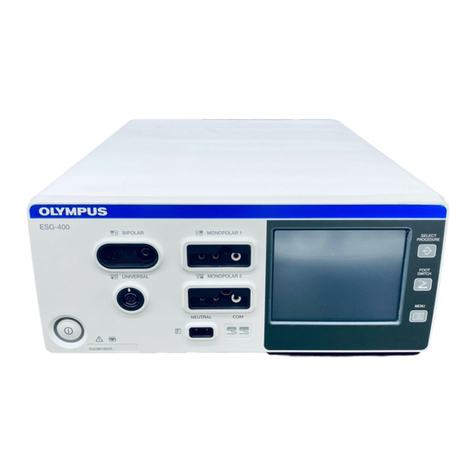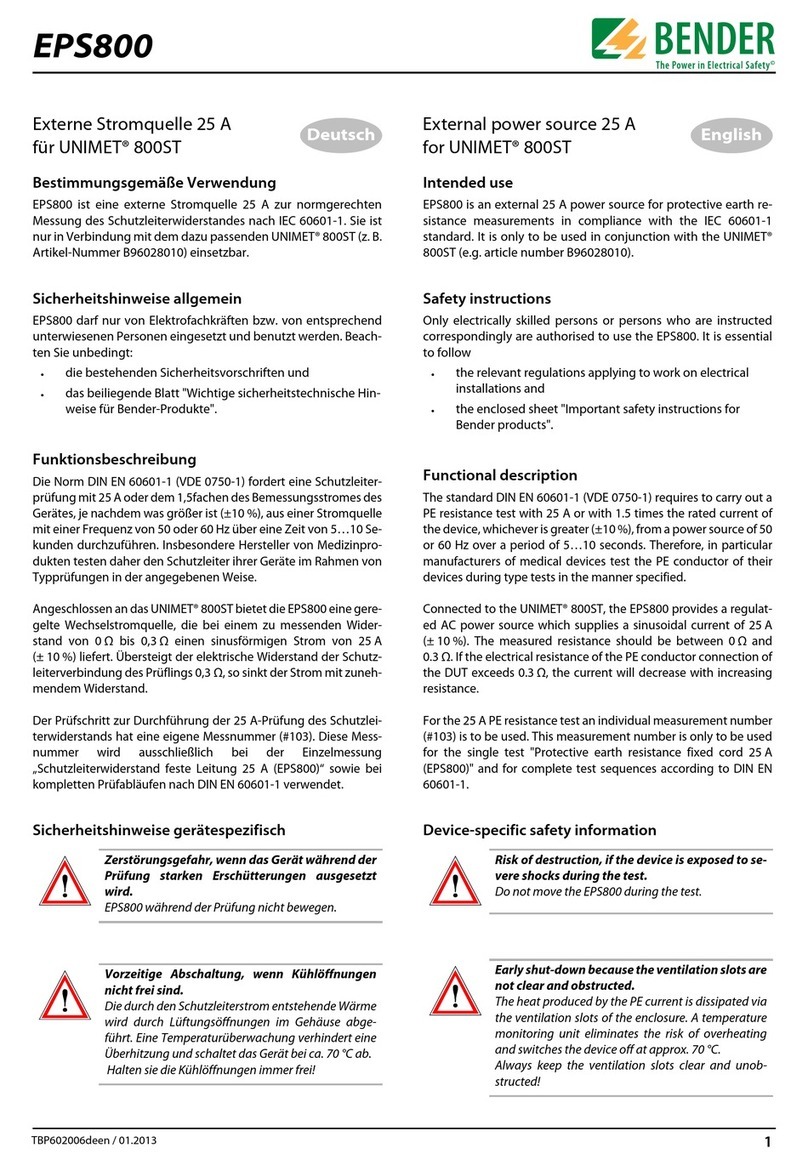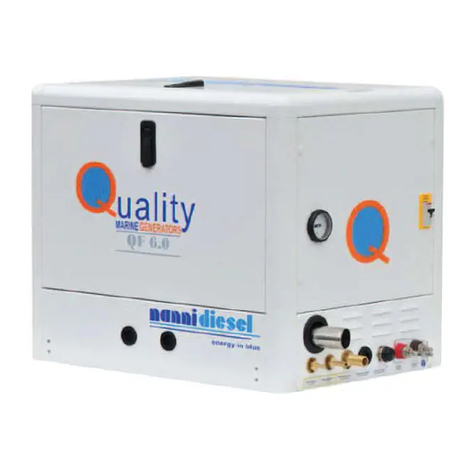Trio SG-402 User manual

~TRIO
RF
SIGNAL
GENERATOR
~~
I H
10
;
SOLID-STATE
SG
402
WIDE
BAND
•
INSTRUCTION
MANUAL

CONTENTS
GENERAL
&
FEATURES
...................
.
SPECIFICATIONS.
. . . . . . . . . . . . . . . . . . . . . . . . 2
CIRCUIT
DESCRIPTION
. . . . . . . . . . . . . . . . . . . . 3
OPERATING
INSTRUCTIONS
. . . . . . . . . . . . . . . . . 4
APPLICATIONS
. . . . . . . . . . . . . . . . . . . . . . . . . . 6
MAINTENANCE
..........................
10
ADJUSTMENT
...........................
12
CAUTIONS
.............................
14
BLOCK
DIAGRAM
........................
15
EXTERNAL
VIEW
........................
16
SCHEMATIC
DIAGRAM
.....................
17

GENERAL
& FEATURES
~]
THIO
S6
401
-o·-·_
-
/"
.
' -
o
All
solid-state construction.
o Compact, easy-to-look-at frequency
scale
with
smooth mechanism_
o 100kHz
to
30MHz frequency coverage in six
ranges,
each
in
different
color on
scale
plate
for
easy, quick
reading.
o
Output
voltage
of
more than
0.1
V rms, continuously
adjustable
to
any desired magnitude through com-
- 1 -
Thank you very much
for
purchasing the
TRIO
SG-402.
The
TRIO
SG-402
is
a radio frequency signal gener-
ator employing a Hartley
circuit
and
covers a frequency
range
of
from
100kHz
to
30MHz in six
ranges.
The
output
voltage available
is
more than
0.1
V rms
and continuously adjustable through combined
use
of
the
RF
GAIN
control and HIGH-LOW attenuator, the
latter giving a fixed attenuation
of
approximately 20dB.
The
output
can
be
AM-modulated, either internally
(approximately 40% at 400Hz)
or
externally (1.5V rms
for
40% modulation
or
more between 50Hz and 10kHz),
when switched.
bined
use
of
20dB (approximately 1/10) attenuator
and RF
OUTPUT
control.
o
Modulation
possible either internally approximately
40% at 400Hz
or
externally (50Hz to 10kHz) when
selected
by
means
of
MODULATION
switch.
o High
stability
against power voltage fluctuations.
o Markings on
scale
plate
for
convenience in amateur
band, and
TV
and
AM
receiver IF adjustments.

SPECIFICATIONS
Oscillating frequency:
Frequency accuracy:
Output
voltage:
Attenuator:
Internal
modulation
frequency:
Internal
modulation
degree:
External
modulation
frequency:
External
modulation
voltage:
Operating temperature:
Power requirements:
Power consumption:
Dimensions:
A band 1OOkHz
to
250kHz
B band
250kHz
to
650kHz
C band
550kHz
to
1.5MHz
0 band
1.5MHz
to
4MHz
E band
4MHz
to
11
MHz
F band 10MHz
to
30MHz
±1.5%
More than
0.1
V rms (20°C)
HIGH-LOW,
(Provide approx-
imately 20dB change)
Approximately
400Hz
40% ±
5%
50Hz
to
10kHz
1.5V rms
for
40%
modulation
or
more
0
to
50°C
100V,
117V
or
230V
AC
±1
0%,
50
or
60Hz
2.8W
186(W) x
220(0)
x
131
(H)
mm
-
2-
Weight:
Accessories
or 190(W) x
245(0)
X 154(H)
mm when all protrusions
are
included.
2.2kg
(
1)
Sh1elded lead
With
clothed
cl1p
and
banana plug.
(2) Fuse (0 1
A)
Fuse
(0
2A)
(3)
Instruction manual
..
····· . 2
·······
.... 2
copy
,

c
CIRCUIT
DESCRIPTION
1.
OUTLINE
Please
refer
to
the
block
diagram
of
Fig. 1 iP.
151
and
circuit
diagrarn
(P.
171.
The sine wave signal produced
rn
tt1e
RF oscrllator
circuit
is
drrect!y arnplrfred by the
rroduldted
arnplrfier
v:hen the
rv10UULJIT!U~
svvitch
:sat
CW
tr1en
passes
the
outcut
attenuator·, and appears at the
output
terminal. When the
~.1()0Ul.AT!Oi'-.J
switch
rs
set
to
INT.
the
output
can
be
rnternaily
modulated
to
approxrmate·
!y
40~
at
400H;
uv
sine wave s:gnal
from
the AF
oscrllatur
ururrt,
or
externally
modulilted
when the
switch
rs
shrfted
to
EXT.
Required level
of
the
moduiat
ing signal
is
more than 1.5V rms
for
40%
modulation
at
frequencres between 50Hz and 1OkHz.
2.
RF OSCILLATOR
CIRCUIT
The RF oscrllator
crrcuit
employs
a
Hartley
circuit,
the oscillating elements consisting
of
coils
(FREO.
RANGE),
which
are
switched in six ranges, and a
variable capacitor
(FREQUENCY
d1al), covering 2.5
times the
lower
edge
of
each
range
or
a
total
of
from
1OOkHz and
30M
Hz.
The
amplifier
circuit
for
the
oscillator
is
a high
input
impedance
circuit
employing
an
FET
(2SK55-E),
-
3-
and rncludes a feedback resistor
for
each range
so
that
output
may
be
equal
ill
ali ranges.
3.
MODULATED
AMPLIFIER
The signa!
from
the RF
oscillator
rcurt
rs
,Jr<rp!rfrecJ
by 0.2 i2SC535-f:3i. and
passes
the rnocJtAned ar;;p(:i:ccr
(cJ
gate
modulated
type
bu1lt around
03,
2S
and
then
an
RLC
type
low
pass
filter
before taken
out
through
an
ernitter
follower,
04
12SC458·Ci.
4.
AF
OSCILLATOR
CIRCUIT
Transistor
05
(2SC458·C) forms
an
HC:
oscillator
,,rcuit,
and its
output
is
coupled to the rnudulated
amplifier
adjusting
by
VR
1.
5.
POWER SUPPLY
Input
AC
voltage
(100V,
117V
or
230V
AC)
is
step·
ed
down
to
a required voltage by the
power
transformer,
rectified
in full-wave
rectification
by
rectifier
01,
and
passed
through
a
smoothing
circuit
to
obtain
the DC
voltage.
This
power
supply
section teeds
15V
DC
to
all
signal generator
circuits
as
"B"
voltage.

OPERATING
INSTRUCTIONS
FRONT PANEL
Ref.
No.
Controls,
Description
Connectors,
etc.
(
1)
(Neon
lamp)
Lights
up
when
POWER
switch
(2) is
turned
to
ON.
(
2)
POWER
Slide
switch
for
power
switching
and
turns
on
power
when
set
to
right-
hand
position.
(
3)
MODULATION
Selector
switch
for
modu-
lating
signal.
EXT
In
this
mode,
output
signal
can be
AM-modulated
at
any
frequency
between
50
Hz
and
10kHz
when
a
modulating
signal is fed
to
EXT
MOD
INPUT
termi-
nals (12) and
(13).
cw
This
is
the
central
position
of
the
MODULATION
switch,
and
produces
un-
modulated
output.
INT
Output
is
AM-modulated
by
the
built-in
AF
oscil-
lator
to
approximately
40%
at
400Hz.
(
4)
__j_(GND)
Grounding
terminal.
-
(
5)
OUTPUT
Any
output
can be
ob-
tained
from
this
output
terminal.
-4-
The controls
and
their
function
are
listed below.
Refer
to
EXTERNAL
VIEW
(P.
16)
Ref.
No.
Controls,
Description
Connectors,
etc.
(
6)
OUTPUT
ATT,
Output
attenuator
20d8
HIGH
In
this
position,
output
is
passed
directly
to
the
out-
put
terminal
without
at-
tenuation.
LOW
Gives an
attenuation
of
approximately
20d8.
(
7)
RF
OUTPUT
Permits
changing
output
voltage
continuously
be-
tween
0 and 0.1 V rms (sine
wave).
(
8)
FREO
RANGE
Used
to
select
frequency
ranges
indicated
on
scale
(10) and
pointer
(11)
as
follows.
A:
100kHz
to
250kHz
8:
250kHz
to
650kHz
C:
550kHz
to
1.5MHz
D:
1.5MHz
to
4MHz
E:
4MHz
to
11MHz
F:
10MHz
to
30MHz
(
9)
(Frequency
dial)
Used
to
set
for
a desired
output
frequency.
Mechanically
ganged
with
the
variable
capacitor
and
pointer(11).

c
Ref.
No.
Controls.
Description
Connectors.
etc.
(101 (Scale
plate)
Graduated
in
six
ranges
to
read
output
frequencies
be·
tween
100kHz
and
30MHz.
(11)
I
(Pointer)
I
Indicates
scale
settings.
c_______L_
REAR
PANEL
I
(12)
EXT
MOD
INPUT
Input
terminal
for
external
modulation
signals.
To
I
modulate
the
SG-402
w1th
I an
external
n1odulation
I signal.
feed
a signal
to
this
I
terminal
and
set
~J'.ODU·
!
LL\TION
switch
(3\
to
i
EXT.
Usable
rnodtJ
ldt1ng
~~,.
i
freouenc
ies
are
lJet-.vPert
bOHz and
1OkHz.
--
I
GND
Groundiny
termindl
fur
~;x-
I
i
ternal
rnodulat1on.
1141
{PnvJer
cord)
Power
scmply
cord.
--
(1)
Starting
With
power cord (14) connected
to
a
power
source,
turn
power
switch (2)
to
ON. This
turns
neon
lamp
(1)
on and places the signal generator in
the
running
condi-
tion.
Allow
2
or
3
minutes
for
the set
to
warm
up in
order
to
stabilize the
operation.
!
-5 -
(2) Setting
to
a desired
frequency
To
set
to
a desired
frequency,
select a
proper
range
with
FREO.
RANGE
switch
(8) and operate
FRE-
QUENCY
dial (9) unt1l its
pointer
(
11
I indicates the
desired
frequency
on scale I10). The
frequency
dial
is
ganged
with
the 'Jariable
capacitor
For
exarnple,
to
set
to
1
MHL.
Set
FREO.
RANGE
switch
18)
to
C.
and
pointer
1111
to
HJ1H; un
sc.ale
110).
(3) AdJUSting
output
voltage
Output
vulta~w
taken
out
from
outout
terrnrnal (:))
can be
continuously
adjusted
from
0
to
0.1V
rrns
by
rnecHlS
of
RF G;\lf,J · •Jntrol
171.
The RF
GA.I~~
rontrol
increases the
output
voltage
when
turned
clockw1se,
up
tD
0 1V rms at the
fully
rlrxkwrse
f'CJS!tron
1f
output
atlenuator
((:))
is
at
HIGH.
When
tt1e
atterluator
IS set to
LOW, the
output
vCJitage
1s
reduced
to
approxrrnately
1;10
( 2UdB). INhen
obta1n1r1g
a srnal! voltage, set the
dttf:r-HJator
to
LOW, srnce this rnakes
adjustments
'"asrer
at
such small voltages.
(4)
Use
of
EXT
MOD
INPUT
terminal
'v'Vhen
connected
to
an
external sine wave
s1gnal,
this
terminal
enat>les
the
output
voltage
to
be
AM-modulated
at
a desired
frequency
between
50Hz
and
10kHz,
vvhen
the
MODULATION
switch
(3)
is
at
EXT
Required
modulating
voltage
is
more
than
1.5Vrms
for 40%
modulation.

APPLICATIONS
In
this description,
it
is
assumed
that
radio receiver
intermediate frequency and
TV
intermediate frequency
are
445kHz
and
10.7MHz respectively.
The followings
are
the examples
of
the
uses
of
this
RF signal generator operated
for
measurements
of
the
RF ampI
ifier
and IF ampI
ifier
of
AM radio receivers.
(
1)
Al1gn
ing IF transformers
Set the SG-402
to
455kHz,
an
intermediate fre·
ANT. Tr1
~~
SG· 402
~...;o;._=_"'_++--'
Local
OSC
SG·402
OUT
- 6 -
quency
of
the radio receiver
to
be
aligned, and connect
the signal generator
to
the
base
of
transistor
Tr2,
a
mixer, in Fig.
2.
The local oscillator must
be
kept in·
operative during this adjustment.
To
make
it
inoperative
shunt the
base
of
the local oscillator transistor
or
tt1e
tank
circuit
to
ground.
Connect
an
output
meter (or a VOM set
to
2.5
to
1
OV
DC range)
to
the
emitter
of
Tr3,
and measure the
emitter
voltage. The
emitter
voltage, which
is
high when
detuned,
will
drop
as
tuned
to
455kHz. This measure·
ment refers
to
intermediate transformer IFT1. From
this
point,
at which the IF transformer
is
accurately
Volt
meter
(VOM)
FIG2.
ALIGNING
IF
AMPLIFIER
)
)

tuned, gradually change the
oscillator
frequency
of
the
SG
402
to
both
sides
of
the
point
to
obtain
a curve,
which should
be
as
shown in Fig.
3.
A
detuning
width
between
points
that
give 3dB
difference
of
output
as
cornpared
to
that
of
the center frequency
(a
point
which
sr1.J•Ned
the
maximum
output
drop)
is
referred
to
as
the
paosband
of
the IF transformer. and
an
attenuation
olJcained when the IF
transformer
is
detuned ±1OkHz
frorn the center frequency
is
called rated selectivity.
lnter-
rned<ate
treq.
FIG3.
SELECTIVITY
-
7-
The frequency scale
of
the
SG-402
is
marked
455kHz
IF
(10.7MHz
for
FM receiver)
for
convenience
in
use.
In
this
way.
the overall selectivity characteristic and
gain
of
the
IF ampI
ifier
can
be
known
by
measuring IF
transformers one
by
one.
When
finding
a
maximum
point
on
the
AF
output
meter. set
MODULATION
switch (3)
to
INT
and
use
a
modulating
output,
or
to
EXT
when
modulating
ex·
ternally.
When
utilizing
the
tuning
meter
or
emitter
voltage, the SG-402 may
be
either
modulated
or
non-
modulated (CW). When measuring the
bandwidth
of
IFTs, however,
non-modulated
signal
will
be
better
since
it
indicates
their
characteristics rnore
faithfully.
(2)
Tracking
A test
circuit
for
tracking
is
shown
1n
Fig. 4.
Tune
the SG-402
to
the receiver frequency
to
be
tested, and
feed its
output
to
the antenna
circuit.
Three
different
frequencies are generally specified
for
this
test:
Three frequencies
tor
standard
tracking
LW MW
sw
180kHz
600kHz
4.0MHz
240kHz
l,OOOkHz
7.0MHz
320kHz
1.400kHz
lO.OMHz

Measure and adjust the RF
tuner
and local
oscillator
frequencies using these three testing frequencies. Con-
nect a
100pF
capacitor
to
the
antenna. This capacitor
serves
as
a
dummy
antenna and
without
this
capacitor, a
point
tuned
during
tracking
will
appear in a
different
place in normal reception.
Adjust
all
controls
of
the receiver
so
that
its
output
becomes
maximum
when a
400Hz,
40%
internally
modulated signal
is
received
from
the signal generator.
Practical receiver sensitivity
is
expressed in terms
of
a
minimum
input
signal voltage measured at the
AF
out-
put
for
20dB
of
signal-to-noise ratio. This sensitivity
can
ANT.
be
checked
by
measuring and adjusting the RF
amplifier
section.
Note
that
this receiver
will
produce
an
image signal
in
addition
to
its
true
signal because
of
its superhetero-
dyne
action. Such
an
image
will
be
910kHz
different
from
its
true
signal when the intermediate frequency
is
455kHz,
and may appear nearly
as
strong
as
the
true
signal in short wave bands. However,
it
can
readily
be
identified
from
the
fact
that
the image
is
always above
its
true
signal
as
checked
by
shifting
the
signal generator
frequency back and
forth,
or
below
the
true
signal on
the receiver dial.
llu
II
II
II
II
FIG4.
TRACKING
ALIGNMENT
-
8-

(3) Suggestions on short wave band
adjustment
To
adjust a short wave receiver operating
at
fre-
quencies above 10MHz, connect
an
actual antenna
to
the
receiver
as
normally
used, and
twine
the
hot
lead
of
the
signal generator
to
this antenna in
two
or
three turns,
to
form
a capacitive coupling
for
adjustment. This small
coupling permits effective adjustment
without
affecting
the actual
conditions
of
the receiver.
An excessively large
input
will
impair
adjustment.
Reduce the attenuator setting
as
much
as
possible and
fully
raise receiver sensitivity. The
AVC
(automatic
volume
control)
may
be
left
operating.
-
9-

MAINTENANCE
1.
REMOVING
THE
CASE
Remove 3 setscrews each on the
left
and
right
side
plates
with
a Phillips screwdriver. The
case
can
then
be
readily removed
by
lifting
it
up
by
the grip
on
top,
since
the
case
does
not
have a
bottom.
2.
ATTACHING
THE
CASE
To
replace the
case
onto
the chassis, loosely thread
-10-
2 setscrews (marked
*)
before
mounting
the
case.
Place the
case
onto
the chassis starting
with
the rear
side and
fit
cuts provided at the
middle
rear
edges
of
left
and
right
side plates
onto
the setscrews attached before-
hand (marked
*).
Press
down
the
case
over the chassis
while
thrusting
it
rearward by the
case
until
the
case
is
placed on
the
case
properly.
In doing this operation,
be
careful
not
to
allow
the
front
ends
of
the
case
to
strike
the panel and damage.
Then,
fix
the
left
and
right
side plates
of
the
case
to
the chassis by screwing 2 setscrews
into
the holes
)

provided
on the
front
and
bottom
edges
of
the srde
plates. The
case
itself
has
no
face
or
ba<.k.
CAUTION:
When rerTlovrng
1.he
CiJSe,
pay
attention
ncn
to
touch
the internal prrnted
,·ircuit
bodrd and
other
pares. Also.
never
fc.;il
to
disc_onnel11he
power
'~ord
because 100\1/\C
(117V
or
2:30V
AC)
is
at the
printed
circuit
boards.
3.
REMOVING THE FRONT PANEL
To
remove
lhe
frun;
02w:el,
ioosen the setscrews
for
-11-
3
knobs
on
trle
panel and remove
the
knobs. Then,
remove 2 setscrews each
from
left
and rrght sides These
screws are used also
to
fix
the
case.
Further
remov•· 2
setscrews
from
the
bottom
of
the panel.
Then,
hold
the
pc;nel
with
both
hands and Dui!
it
to1Nard
you.
The
panel
will
then
corne
off
the
chas~rs
When rernoving ttle panel,
pull
it
gently
whric•
ta>
rng
care
not
to
allov;
the panel
to
be caught
hy
the
t8rr;\irld\S,
s\tdt~
y.:
..
t'
he-:,,
ne,,Jn ldrrq;,
etc.

AD0USTMENT
Model SG-402
is
shipped
after
factory
adjusted
about
the
following
items. When
it
is
to
be
readjusted,
however, calibrate the
power
source voltage before
adjustment.
The test
equipment
to
be
used
for
calibration
should also be calibrated ones.
Prior
to
adjustment. set the
controls
as
follows
unless otherwise noted.
(1)
MODULATION
(3) at
CW
(2)
OUTPUT
ATT
(6) at
HIGH
(3)
FREO.
RANGE
(8) at C
(4) RF
GAIN
(7) at
maximum
output
(fully
clockwise
position)
(5)
FREQUENCY
dial (9) at
1MHz
Prior
to
proceed in the adjustment, make DC
voltage checks
to
all
circuits
of
this signal generator
to
make sure
that
all
circuits
are
operating
normally.
For
proper
checking, refer
to
the
circuit
diagram on page 17.
1.
ADJUSTING THE OUTPUT VOLTAGE
(
1)
Connect
an
RF
voltmeter
to
output
terminals
(4)
and (5).
(2)
Adjust
semi-fixed resistor
VR2
until
the RF volt-
meter reads
more
than
0.1V
rms.
(If
an
ordinary
AC
voltmeter
is
used
as
an
alternative,
use
range A
allowing
its
narrower
frequency response.)
-12-
2.
ADJUSTING
INTERNAL
MODULATION
DEGREE
If
an
oscilloscope
is
used,
adjustment
may
be
accomplished
either
in a wave-envelope
pattern
or
trape-
zoidal pattern method. In
either
case,
adjust at a fre-
quency
within
range A
of
the signal generator.
(1) Set the
MODULATION
switch
to
INT.
(2) Connect
an
oscilloscope
to
output
terminals (4)
and (5).
(3)
Adjust
the semi-fixed resistor VR 1
until
approx-
imately
40%
of
modulation
is
obtained.
rM~l
L I
___l
Wave
envelope
pattern
method
Trapezoidal
pattern
method
3.
ADJUSTING THE POINTER
(1)
Fix
the variable capacitor
to
provide a
maximum
value.
(2)
Adjust
the
pointer
to
a
proper
position.
If
the
pointer
alone cannot give a
proper
setting, adjust

the
scale
plate
after
loosening its setscrew.
4.
ADJUSTING THE OSCILLATION
FREQUENCY
(
1)
Connect
a
frequency
counter
to
output
terminals
(4) and
(5).
(2) Set
the
FREOUE~JCY
RANGE
to
C and the
pointer
to
550kHz.
Confirm
that
the
oscillation
frequency
is
accurate
to
±1.5%
of
550kHz.
It
not.
adjust L3.
13)
Then,
shift
the
pointer
to 1.fSMHz, and
confirm
that
the
oscillation
frequency
is
1.5MHz
±1
5%.
If
not,
adjust
trimmer
TC1,
located on the variable
c:apaCIWr.
(4)
Return
the
pointer
to
550kHz
and
reconfirm
that
the stgnal generator
is
osc:llating at 5:SOkH;
±1.:)~-G.
If
thc;re
!S
a greater
deviation.
reneat adJustments
(2) and
13)
until
a
correct
frequer1cy
is
obtamed.
15)
Calibrate
other
ranges than C w1th the
pointer
betng
set
to
the
lowest
frequency
of
the range
And,
adjust coil L1
for
range
A,
cotI
L2
for
range
B.
coil
L4
for
range
0,
coil
L5
for
range E and
coil
L6
for
range F.
Trimmer
TC1,
which
has
been
finished
in
adJUStments (2) and (3),
should
not
be
touched.
(6)
Other
intermedtate
scale
graduations
are auto-
matically
calibrated
by the above adjustments.
-13-

CAUTIONS
CAUTIONS
(
1)
The
primary
voltage
of
the power transformer
can
be
altered
as
foil
ows.
Connections at
printed
circuit
board terminals:
100V
AC: Connect
to
No.
35
and 32
117V
AC: Connect
to
No.
34
and 32
230V
AC: Connect
to
No. 33 and 32
Fuse
for
230VAC
operation
is
0.1
A.
AC230V
AC
117V
AC
IOOV
.l
35
34
I
33
Fuse
32
0
31
0
30
-14-
(2)
Although
this signal generator
will
start operating
as
soon
as
power
is
supplied, however,
allow
approx·
imately 3 minutes
for
the
set
to
warm up when
making
an
accurate measurement.
(3) Since the attached shielded lead
has
capacitance
of
approx. 100pF (between a
conductor
and shield) ,
per 1m length,
output
voltage
will
be
affected large-
ly.
For
instance, attenuation by
it
is
6dB at 30MHz.
If
the above attenuation
is
seriously considered,
use
a single lead shorten.
In this
case,
the lead
will
be
affective inductively.
(4)
Avoid
to
install this
set
in a place which contains a
strong magnetic
or
electrostatic field
as
well
as
high
temperature
or
humidity.

(


NOTE: T
he
C11cu
1t 1
,----
---
- e ements ma
-
--
- Y be changed w
- - - -
lthout
not
-
-----
-
ICe
OWing t
-----
o a
technical.
----
Innovation
il
SG-402
.
-
17-

A
product
of
TRIO-KEN'WOOD
CORPORATION
17-5, 2-chome,
Shibuya,
Shibuya-ku,
Tokyo
150,
Japan
05112
PRINTED
IN
JAPAN
850-0725-00
(G)
Table of contents
Popular Portable Generator manuals by other brands
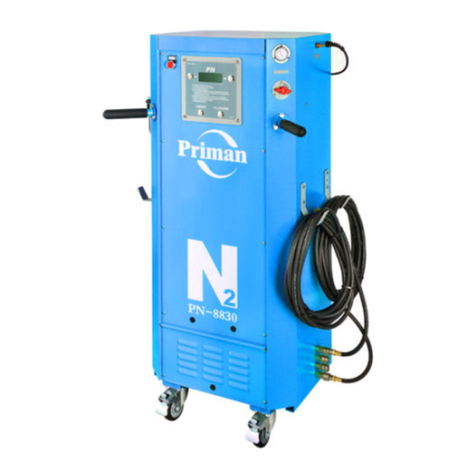
Priman
Priman PN-8830 quick start guide
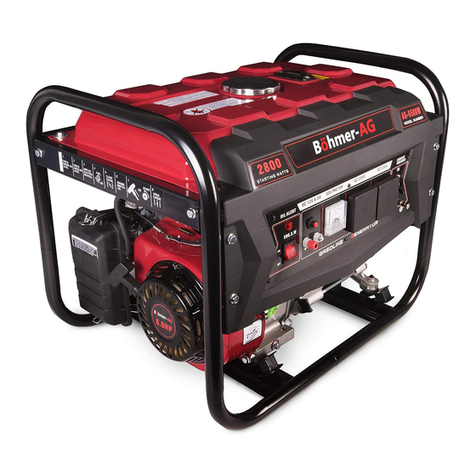
Bohmer-AG
Bohmer-AG W Series Operation manual

Bowens
Bowens QuadX 3000 operating instructions

Winco
Winco HPS9000VE/E Installation & operator's manual

Homelite
Homelite UT902211 Series Operator's manual
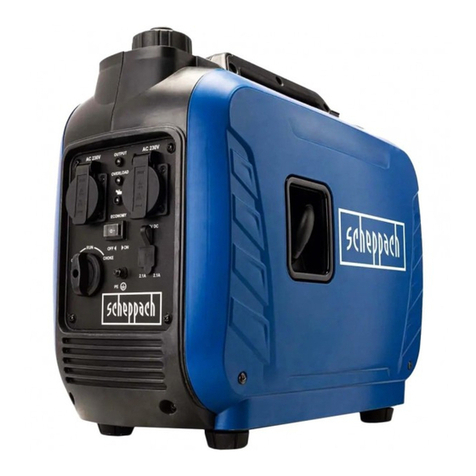
Scheppach
Scheppach SG2500i Translation of original instruction manual
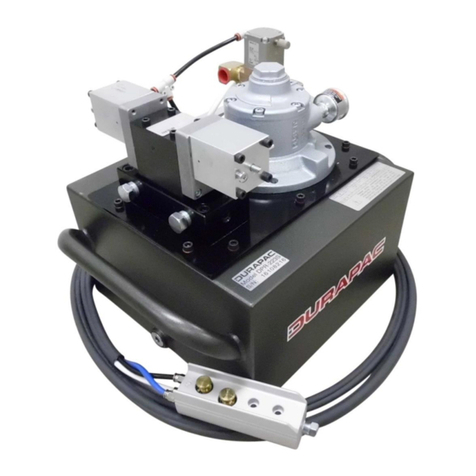
Durapac
Durapac DPR-223S instruction manual

Mosa
Mosa GE 6500 LBS user manual

Generac Power Systems
Generac Power Systems GP5500 specification

Humana
Humana Health Care Nano-Bubble Operation manual
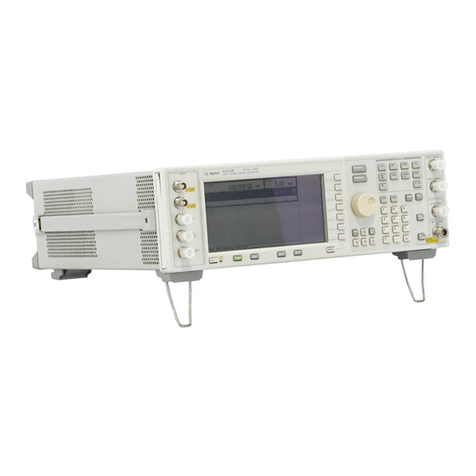
Agilent Technologies
Agilent Technologies ESG-D Series Manual supplement

CAVIDYNE
CAVIDYNE CaviBlaster 2828-E60 Operation & maintenance manual
